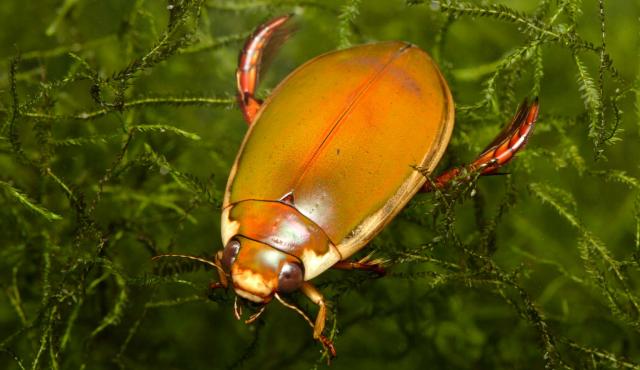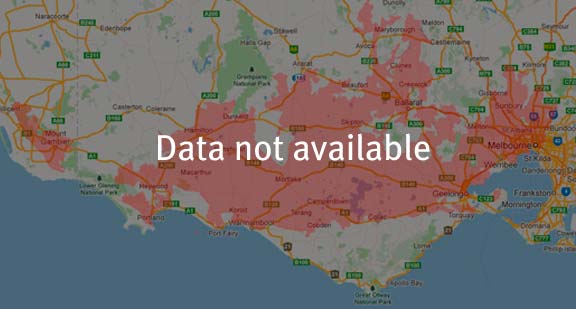A range of teacher professional learning programs will be developed to accompany the Biodiversity of the Western Volcanic Plains online outreach...

Diving Beetle
Onychohydrus scutellaris
Immediately after biting their prey the adults secrete digestive enzymes into their prey. Diving beetles store air in a bubble held beneath their hardened wings. They use this oxygen during their underwater dives so they can hunt food and find mates. When prey numbers get too low, the beetles fly to a new water body and settle there. Adults lay their eggs in the water where tiny predatory larvae hatch out. The larvae spend their entire larval stage in the water before digging into the muddy banks and pupating.
| Details | Description |
| Type | Invertebrate |
| Group | Insect - Beetle |
| Former Scientific Name | Homeodytes scutellaris |
| Identifying Characteristics | |
| Distinctive Markings | Large, paddle-like hind legs with a dense line of swimming hairs. |
| Diet | Carnivore. Eats small aquatic animals including insects, crustaceans, worms, leeches, molluscs, tadpoles and possibly small fish. |
| Habitat | Lives in freshwater bodies such as dams and lakes. |
| Native Status | Native to Australia |
| Taxonomy | |
| Phylum | Arthropoda |
| Class | Insecta |
| Order | Coleoptera |
| Family | Dytiscidae |
| Genus | Onychohydrus |
| Species | scutellaris |

Distribution maps indicate current and historic locations where species have been sighted.
Source: Atlas of Living Australia
| Conservation Status | |
| DEPI Advisory List | Not listed |
| FFG Act | Not listed |
| EPBC Act | Not listed |
The conservation status of species is listed within Victoria and Australia.
The Department of Environment and Primary Industry (DEPI) Advisory List consists of non-statutory advisory lists of rare or threatened flora and fauna within Victoria.
The Flora and Fauna Guarantee Act 1988 (FFG Act) lists threatened species in Victoria. Under the Act, an Action Statement is produced for each listed species.
The Environment Protection and Biodiversity Conservation Act 1999 (EPBC Act) is the Australian Government’s key piece of environmental legislation, listing nationally threatened native species and ecological communities.



